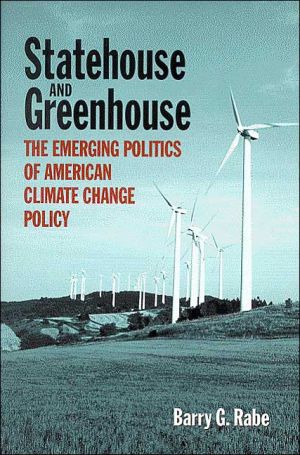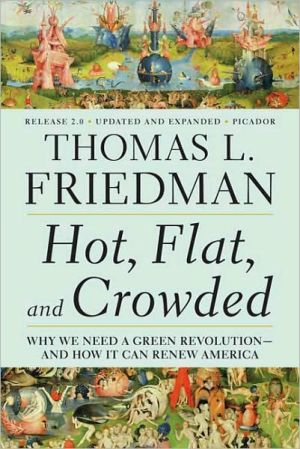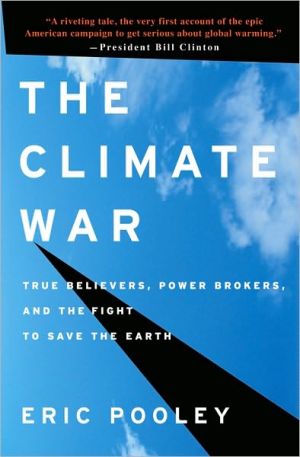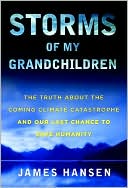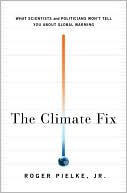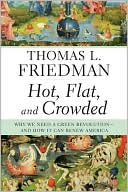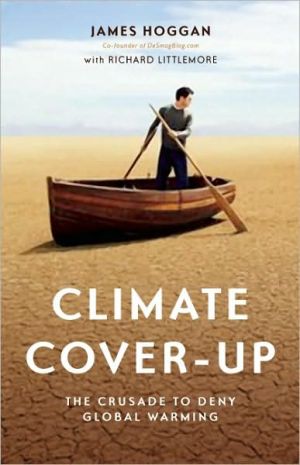Statehouse and Greenhouse: The Stealth Politics of America Climate Change Policy
No environmental issue triggers such feelings of hopelessness as global climate change. Many areas of the world, including regions of the United States, have experienced a wide range of unusually dramatic weather events recently. Much climate change analysis forecasts horrors of biblical proportions, such as massive floods, habitat loss, species loss, and epidemics related to warmer weather. Such accounts of impending disaster have helped trigger extreme reactions, wherein some observers...
Search in google:
No environmental issue triggers such feelings of hopelessness as global climate change. Many areas of the world, including regions of the United States, have experienced a wide range of unusually dramatic weather events recently. Much climate change analysis forecasts horrors of biblical proportions, such as massive floods, habitat loss, species loss, and epidemics related to warmer weather. Such accounts of impending disaster have helped trigger extreme reactions, wherein some observers simply dismiss global climate change as, at the very worst, a minor inconvenience requiring modest adaptation. It is perhaps no surprise, therefore, that an American federal government known for institutional gridlock has accomplished virtually nothing in this area in the last decade. Policy inertia is not the story of this book, however. Statehouse and Greenhouse examines the surprising evolution of state-level government policies on global climate change. Environmental policy analyst Barry Rabe details a diverse set of innovative cases, offering detailed analysis of state-level policies designed to combat global warming. The book explains why state innovation in global climate change has been relatively vigorous and why it has drawn so little attention thus far. Rabe draws larger potential lessons from this recent flurry of American experience. Statehouse and Greenhouse helps to move debate over global climate change from bombast to the realm of what is politically and technically feasible. Author Description: Barry G. Rabe is a professor of environmental policy in the School of Natural Resources and Environment and professor of public policy in the Gerald R. Ford School of Public Policy at the University of Michigan. He also directs the university's new Program in Environment. Rabe is the author of two previous Brookings books, When Federalism Works and Beyond NIMBY.
Statehouse and Greenhouse\ The Emerging Politics of American Climate Change Policy \ \ By Barry G. Rabe \ Brookings Institution Press\ Copyright © 2004 Brookings Institution Press\ All right reserved.\ ISBN: 0-8157-7310-2 \ \ \ \ Chapter One\ The Politics of Climate Change, State Style \ George W. Bush and Christine Todd Whitman may well have signed into law policies that will achieve greater levels of greenhouse gas reduction than those approved by any other elected officials in the United States during the past decade. These policies are in no way associated, however, with the federal offices they assumed in 2001. Instead, their environmental reputations reflect major policies that were approved during their governorships in Texas and New Jersey, respectively, and are currently being implemented by their successors there.\ For Bush, this entailed signing the Texas Public Utility Regulatory Act of 1999. This bill included an ambitious program that required Texas utilities to increase their reliance over the next decade on renewable energy sources that do not generate greenhouse gases. It outlined a detailed plan to increase steadily the level of renewable energy used in the state and established penalties for noncompliance. As a result, Texas has experienced a "wind rush" and is expected to generate between 3 and 4 percent of its electricity from renewable wind power by 2010, up from a rate below 1 percent when the legislation was signed. Given the enormous scope of the Texas economy and its heavy reliance on electricity, it is estimated that this legislation will reduce Texas carbon dioxide emissions by 1.83 million metric tons a year by 2009. These reductions may be greater than the entire carbon dioxide (C[O.sub.2]) emissions generated by either Vermont or the District of Columbia in that year (see table 1-1).\ Bush may have referred to this legislation on the presidential campaign trail-most likely during a speech in Saginaw, Michigan, in September 2000 that featured a widely noted commitment to take steps to reduce greenhouse gases, if elected. What went less noted was a tweak at his main opponent, incumbent vice president Al Gore, for backing away during the campaign from his earlier, more aggressive proposals and instead emphasizing a more modest mixture of tax credits and voluntary reduction programs to reduce greenhouse gases. Bush contended that Texas had found a better method to reduce greenhouse gas emissions. He promised to build on that experience if elected president.\ Whitman's involvement included active support through a series of administrative orders and endorsement of legislation involving an across-the-board commitment by the state of New Jersey to reduce its greenhouse gas emissions to 3.5 percent below 1990 levels by 2005. This went well beyond the reduction levels pledged by President George H. W. Bush in the 1992 United Nations Framework Convention on Climate Change that has essentially gone ignored by the United States and most other national signatories. In fact, New Jersey's actions signaled a willingness to reach beyond the 1992 agreements and put the state in line to attain the levels of reduction pledged by the United States in the 1997 Kyoto Protocol-7 percent below 1990 levels by 2012. The state took this action even though Kyoto stood no chance of Senate ratification during the Clinton-Gore administration and was never submitted for Senate consideration.\ New Jersey is on track to reach these reduction targets, which have continued to be supported by Whitman's Democratic successor, James McGreevey. The New Jersey strategy has emphasized a series of programs that involve virtually every sector with some impact on greenhouse gas releases, mixing a series of coercive and voluntary regulatory tools. "New Jersey has set an ambitious goal to not only curb greenhouse gas emissions, but to reduce them," explained Whitman in endorsing the reduction pledge. "The fact is that climate change associated with greenhouse gases has an effect on every aspect of our daily lives. The environmental and economic benefits that stem from controlling greenhouse gases are enormous."\ The move from the statehouse to the White House led to far more cautious approaches to greenhouse gases by former governors Bush and Whitman. In many respects, the federal government's role in climate change remains as unclear today as it was in the late 1980s, when a convergence of research findings and steamy summers thrust climate change onto the national political agenda. Ironically, this inconclusive soap opera on the Washington stage has served to obscure an increasingly dynamic and active process of developing policies to reduce carbon dioxide, methane, and other greenhouse gases. Dozens of state laws have been enacted-many since 1998-that establish specific state-based strategies with the explicit intent of reducing greenhouse gases. These involve formal commitments in virtually every sector that generates such gases. When combined, they constitute an almost stealth-like approach to global climate change, in that they have received remarkably little attention from scholars, journalists, or environmentalists.\ These state programs, of course, lack the political sex appeal of an international trading regime for greenhouse gases. Collectively, they only begin to make a dent in the levels of reduction that may be warranted in coming decades. Moreover, they do not involve all states, some states being either indifferent or hostile toward such policies. Nonetheless, while climate change policy appears hopelessly deadlocked in Washington, a set of state governments that cuts across partisan and regional lines is demonstrating that it is possible to make some significant inroads on this issue, often through creative initiatives tailored to particular state circumstances and opportunities.\ Collectively, these policies indicate alternative ways to address global climate change that may be particularly relevant for a nation as physically large and economically diverse as the United States. Indeed, many American states release a higher amount of greenhouse gases each year than many nations that are either Kyoto signatories or prominent candidates for future involvement. Texas, for example, exceeds the United Kingdom and France in annual emissions, just as Ohio exceeds Taiwan, Illinois exceeds Thailand, Georgia exceeds Argentina, New Jersey exceeds Egypt, Wisconsin exceeds Pakistan (see table 1-2), Colorado exceeds Iraq, and Massachusetts exceeds Norway. In fact, if each of the fifty states were to secede from the union and secure national sovereignty, many would rank among the world's leading national sources of greenhouse gases. In turn, states can address greenhouse gas emissions directly or through the many key policy areas they dominate-from electricity regulation to land use-that are profoundly relevant to any long-term effort to reduce greenhouse gases. They have turned increasingly to these powers in recent years, often expanding them in creative ways, in the process of redefining American climate change policy.\ The evolution of climate change policy over the past decade from Washington to the states has a number of roots, not the least of which is the enormous policy gap created by federal action-and inaction. In their efforts to bridge this gap, some states have characterized the possibility of early action on climate change as an environmental necessity that could offer economic advantages, others as an economic development opportunity that warrants exploration, and still others as an economic threat to be avoided at all costs. This, in turn, affects the ways in which states choose to label their emerging policies. Obviously, virtually every policy enacted by any government, from closures of military bases to construction of schools, could have some impact on greenhouse gases. Rather than examine such "accidental" policies, this book focuses on two other types of policies. One set includes those policies that expressly attempt to reduce carbon dioxide or other greenhouse gases, such as laws in New Hampshire and Massachusetts that regulate carbon dioxide emissions from electrical utilities as part of a "multipollutant" strategy. Another set includes those policies that are not explicitly labeled as efforts to reduce greenhouse gases but whose proponents are clearly aware of the likely impact and committed to monitoring any reductions. These types of policies include the Texas "renewables portfolio standard" signed into law by Governor Bush and Georgia's crosscutting effort to reduce motor vehicle use in the Atlanta metropolitan area.\ The capacity of policy entrepreneurs to advance ideas for greenhouse gas reduction, working within different political and economic contexts, influences what they can and cannot attempt to do. Such entrepreneurs in these cases are most commonly found in the upper tiers of state agencies with jurisdiction over energy, environmental protection, transportation, agriculture, forestry, and natural resources. They work within existing political and resource constraints but nurture ideas and coalitions that lead to broadly supported greenhouse gas reduction policies tailored to the particular features of their state. In particular, successful entrepreneurs prove highly effective at linking greenhouse gas reduction initiatives with long-term economic development opportunities for a state. In many instances, they propose new policies on the basis of previous experience in related areas, such as emissions trading or energy efficiency, and have established themselves as highly credible experts in designing new policies.\ The range of recent state experience is explored in an examination of a dozen states in later chapters of this book. These states were selected to maximize partisan, economic, social, and regional diversity. They demonstrate a wide range of possible policy responses, from strong commitment to intense opposition. As a result, they offer a representative blend of recent American state experience rather than an exclusive sampler of best practices and success stories.\ The Rocky Road from Rio: Climate Change Science and Politics\ At first glance, global climate change would appear to be the quintessential policy problem requiring a top-down strategy imposed by an international regime and implemented through binding agreements with national governments. Greenhouse gases are generated by all of the world's nations, although developed nations such as the United States have been dominant sources. Any long-term strategy to stabilize or reduce greenhouse gas levels will require widespread engagement, including the involvement of developing nations such as China and India that are increasingly large contributors to the problem (see table 1-2). Unlike other environmental problems that can literally be exported from one jurisdiction to another, such as industrial wastes and conventional air pollutants, any release-or reduction-of greenhouse gases from any source has global ramifications.\ Global climate change thus constitutes a unique type of environmental problem and challenge to collective action. Whereas most environmental policy constitutes a response to pollutants or substances widely perceived as bad for the environment and for human health, greenhouse gases are truly a mixed bag. Some of these gases, such as carbon dioxide, trap heat in the atmosphere and have fostered temperature levels in recent centuries conducive to staggering rates of agricultural and economic productivity as well as population growth. Many of these gases are familiar to the most basic science student, largely "natural" in origin, as opposed to such conventional "contaminants" as hazardous wastes and toxic air pollutants. Hence they are hard to vilify, especially in the absence of exact cause-and-effect evidence of their impact. Moreover, greenhouse gas releases have been a fairly reliable proxy for overall rates of economic development; the very concept of a "decarbonized" society may be equally disconcerting to developed nations that generate substantial emissions and developing nations eager to expand their economies through increased reliance on fossil fuel.\ At the same time, however, greenhouse gas levels have grown at a steady-and alarming-rate in the industrial era. Over the past two centuries, atmospheric levels of carbon dioxide have increased by at least 30 percent, methane levels have more than doubled, and nitrous oxide levels have climbed by 15 to 20 percent. This rate of increase has been particularly dramatic in recent decades, owing to population growth and continuing changes in economic development and transportation. In the event that no policies are implemented to curb current rates of carbon dioxide release, its concentration by 2100 is projected to be at least 50 percent higher than 1995 levels.\ The increase in greenhouse gases has corresponded in recent decades with a series of alarming developments concerning climate. Overall, global surface temperature increased by approximately 1 degree Fahrenheit (about 0.6 degrees Celsius) during the twentieth century. The year 2002 was the second-hottest year worldwide since the advent of modern record-keeping in 1880, and nine of the ten highest annual temperatures during this era have been registered since 1990. The National Research Council, drawing heavily on a series of studies published by the Intergovernmental Panel on Climate Change, estimates that projected growth in greenhouse gas levels will produce a global surface temperature rise between 2.5 and 10.4 degrees Fahrenheit (1.4 and 5.8 degrees Celsius) by the end of the current century. In turn, global sea levels rose from ten to twenty-five centimeters over the past hundred years and are projected to further increase by as much as fifty centimeters during the current century.\ In North America, warming Pacific Ocean temperatures are contributing to significant declines in fish, mammals, birds, and seaweed from California to Alaska. A number of states with large coastal areas or large surfaces at or below sea level have experienced a range of unusually intensive weather episodes in recent years, particularly southeastern states such as Louisiana and Florida. The likely impact of future changes varies enormously by region, and estimates remain inexact, but no portion of the United States is expected to remain unaffected. Even a chilly state such as Minnesota, often the brunt of economists' jokes anticipating an upswing for the state in tourist visits and retirement relocations as a result of rising temperatures, may face serious challenges. State and national studies project that by 2050 the state will see a tripling of heat-related deaths and that by 2100 it may be contending with a significant dieback of boreal forests, major shifts in soil receptivity to agricultural bounty, possible temperature increases of between 2 and 7 degrees Fahrenheit, the introduction of new diseases, and substantial loss of fish and species habitats.\ All of these linkages and projections, of course, remain enormously inexact.\ \ Continues...\ \ \ \ Excerpted from Statehouse and Greenhouse by Barry G. Rabe Copyright © 2004 by Brookings Institution Press . Excerpted by permission.\ All rights reserved. No part of this excerpt may be reproduced or reprinted without permission in writing from the publisher.\ Excerpts are provided by Dial-A-Book Inc. solely for the personal use of visitors to this web site. \ \
Preface1The Politics of Climate Change, State Style12The Economics of Climate Change Policy383The Mechanics of Climate Change Policy744An Unlikely Front-Runner in Climate Change Policy1095Looking Ahead to the Next Generation of Climate Change Policy146Notes181Index201
